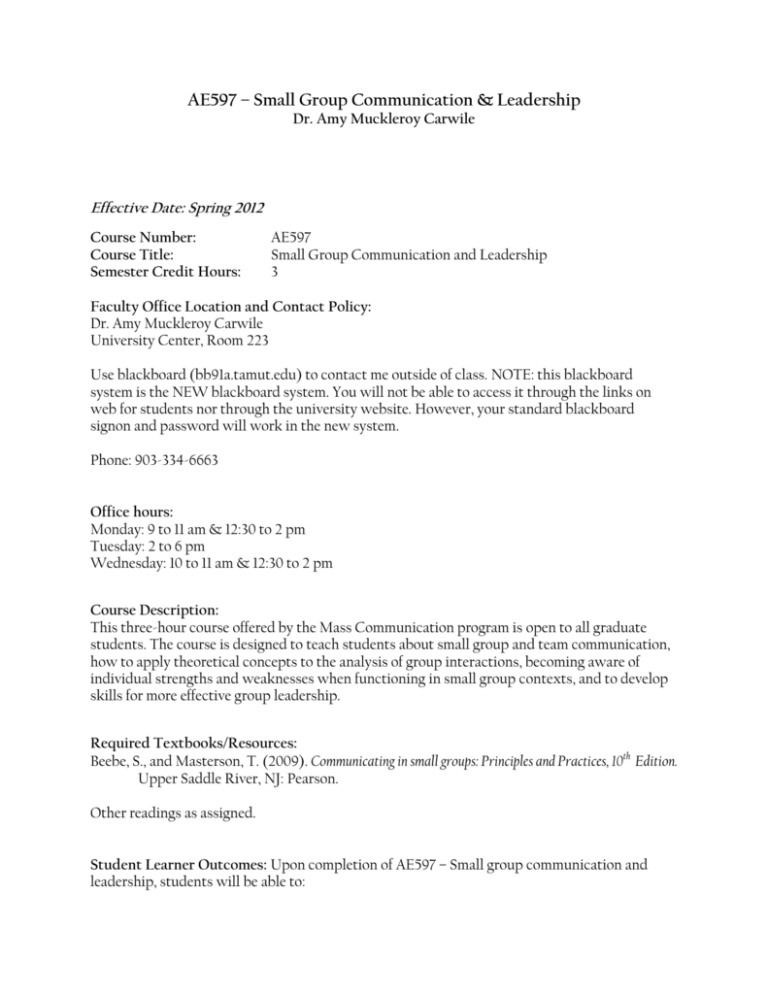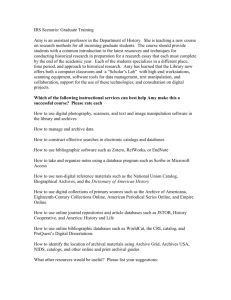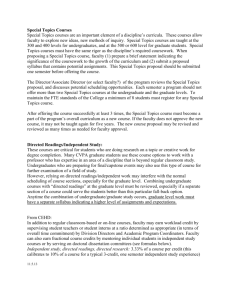
AE597 – Small Group Communication & Leadership
Dr. Amy Muckleroy Carwile
Effective Date: Spring 2012
Course Number:
Course Title:
Semester Credit Hours:
AE597
Small Group Communication and Leadership
3
Faculty Office Location and Contact Policy:
Dr. Amy Muckleroy Carwile
University Center, Room 223
Use blackboard (bb91a.tamut.edu) to contact me outside of class. NOTE: this blackboard
system is the NEW blackboard system. You will not be able to access it through the links on
web for students nor through the university website. However, your standard blackboard
signon and password will work in the new system.
Phone: 903-334-6663
Office hours:
Monday: 9 to 11 am & 12:30 to 2 pm
Tuesday: 2 to 6 pm
Wednesday: 10 to 11 am & 12:30 to 2 pm
Course Description:
This three-hour course offered by the Mass Communication program is open to all graduate
students. The course is designed to teach students about small group and team communication,
how to apply theoretical concepts to the analysis of group interactions, becoming aware of
individual strengths and weaknesses when functioning in small group contexts, and to develop
skills for more effective group leadership.
Required Textbooks/Resources:
Beebe, S., and Masterson, T. (2009). Communicating in small groups: Principles and Practices, 10th Edition.
Upper Saddle River, NJ: Pearson.
Other readings as assigned.
Student Learner Outcomes: Upon completion of AE597 – Small group communication and
leadership, students will be able to:
AE597-Small Group Communication & Leadership
Carwile – Spring 2012 – page 2
1. Demonstrate effective small group or team facilitation skills within social and
organizational structures,
2. examine leadership styles and small group relational techniques,
3. analyze individual strengths and weaknesses when functioning in academic, social and
organizational group contexts, and
4. manage group conflict, decision-making and collaboration processes.
Course Outline:
I.
Group and team principles, practices and theory
II.
Group formation, collaboration, relating to others, improving group climate
III.
Managing group conflict and enhancing group and team communication skills
IV.
Leadership, making decisions, solving problems, enhancing creativity
Course Requirements:
Be here. In order for you to get the most out of this class, attendance is vital.
Turn off all electronic devices. Politeness is key to group enjoyment and engagement.
Read. Have all reading assignments completed before class.
Discuss and be a leader. Be prepared to discuss readings and other assignments as an
individual and as a group.
Methods of Evaluation:
3 tests – 15% or 90 points
Each test will comprise 5% (or 30 points) of your final course grade. The graduate tests
will be at a graduate level – prepare accordingly.
Harvard Business Review article presentation – 10% or 60 points
You must select an article from the Harvard Business Review related to small group
communication or leadership and present it to the class. Your presentation should last 7
to 9 minutes. A Q&A session will follow. Evaluation consists of your presentation skills,
your ability to handle and answer questions, and your demonstrated knowledge of the
course materials by linking the article to the concepts in the course. You should prepare
a short (1-page) synopsis of your article as a handout for all class members. PowerPoint is
not necessary.
Individual project regarding small group communication or leadership– 55% or 330
points
This project is an individual project and includes a completed research component
(quantitative or qualitative) related to small group communication and leadership. You
must focus your project in the realm of communication. Depending on the scope of the
project, you may need to submit your project to the Institutional Review Board for
Protection of Human Subjects at A&M-Texarkana. See Dr. Carwile for specifics
regarding procedures, dates, etc. Students will prepare a complete research project
suitable for conference submission and present results to the class. The research project
© 2012 – Amy Muckleroy Carwile; All Rights Reserved
AE597-Small Group Communication & Leadership
Carwile – Spring 2012 – page 3
will comprise 35% of the student‟s final course grade and the presentation will comprise
20% of the student‟s final course grade.
Discussion Leader – 20% or 120 points
As graduate students, you set the example for the undergraduates concurrently enrolled
in this course. Thus, I plan to utilize your skills as a graduate student to fulfill the role of
a discussion leader. Leading discussion groups gives you an opportunity to practice the
small group communication and leadership skills discussed in class. At times, you may
lead a group discussion with the entire class or with a small group of students. In
general, you can reasonably assume that most classes will have some type of group
discussion activity related to the readings and that you will be assigned a group of
undergraduates to lead through an activity.
At other times, you may be given a specific reading to explain to the class as a whole and
link it to the chapter discussions for that week. Either/both scenarios are possible.
Evaluation of your participation as a discussion leader centers (in part) on the total
number of class days with a group activity and the total number of sessions you led. Each
graduate student will have the opportunity to lead the same number of small group
discussions and/or entire class discussions.
Evaluation of your participation as a discussion leader also focuses on how you manage
and lead your group, as well as the quality of the student comments that come from your
group. This includes keeping the group on task, focusing on the material at hand and
ensuring a professional learning environment.
It is important to note that these activities are not eligible for makeup and that if you are
not in class, you cannot participate. If you have other commitments that require you to
miss class regularly, or if you are unable to make the commitment to regular, consistent
attendance, this may not be a good course for you to take. It is my opinion that graduate
students should not need an attendance policy because attendance at every class meeting
demonstrates your commitment to the course and to your graduate work.
Grading Scale
90-100 A
80-89 B
70-79 C
60-69 D
0-59 F
Letter Grade
Grade Equivalent
Point range
A
90 to 100
540 to 600
B
80 to 89
480 to 539
C
70 to 79
420 to 479
D
60 to 69
360 to 419
F
0 to 59
0 to 359
© 2012 – Amy Muckleroy Carwile; All Rights Reserved
AE597-Small Group Communication & Leadership
Carwile – Spring 2012 – page 4
ASSIGNMENT
POINT VALUE
% OF FINAL GRADE
Test 1
30
5
Test 2
30
5
Test 3
30
5
Harvard Business
Review
60
10
Individual Project
330
55
Discussion Leader
120
20
TOTAL
600
100%
Student Participation:
a. Participation Policy: Attend class on a regular basis, discuss the components of the
readings, and participate in group discussions and activities.
b. Course Etiquette: use decorum as your guiding principle when communicating with
other students in the course or your professor.
Disability Accommodations: Students with disabilities may request reasonable
accommodations through the A&M-Texarkana Disability Services Office by calling 903-2233062.
Academic Integrity: Academic honesty is expected of students enrolled in this course. Cheating
on examinations, unauthorized collaboration, falsification of research data, plagiarism, and
undocumented use of materials from any source constitute academic dishonesty and may be
grounds for a grade of „F‟ in the course and/or disciplinary actions. For additional information,
see the university catalog.
A&M-Texarkana Email Address: Upon application to Texas A&M University-Texarkana an
individual will be assigned an A&M-Texarkana email account. This email account will be used
to deliver official university correspondence. Each individual is responsible for information sent
and received via the university email account and is expected to check the official A&MTexarkana email account on a frequent and consistent basis. Faculty and students are required
to utilize the university email account when communicating about coursework.
Drop Policy: To drop this course after the 12th class day, a student must complete the
Drop/Withdrawal Request Form located on the University website
(http://tamut.edu/Registrar/droppingwirthdrawing-from-classes.html) or obtained in the
Registrar‟s office. The student must submit the signed and completed form to the instructor of
each course indicated on the form to be dropped for his/her signature. The signature is not an
“approval” to drop, but rather confirmation that the student has discussed the drop/withdrawal
© 2012 – Amy Muckleroy Carwile; All Rights Reserved
AE597-Small Group Communication & Leadership
Carwile – Spring 2012 – page 5
with the faculty member. The form must be submitted to the Registrar‟s office for processing in
person, email (Registrar@tamut.edu), mail (P.O. Box 5518, Texarkana, TX 75505) or fax (903223-3140). Drop/withdraw forms missing any of the required information will not be accepted
by the Registrar‟s office for processing. It is the student‟s responsibility to ensure that the form
is completed properly before submission. If a student stops participating in class (attending and
submitting assignments) but does not complete and submit the drop/withdrawal form, a final
grade based on work completed as outlined in the syllabus will be assigned.
© 2012 – Amy Muckleroy Carwile; All Rights Reserved







